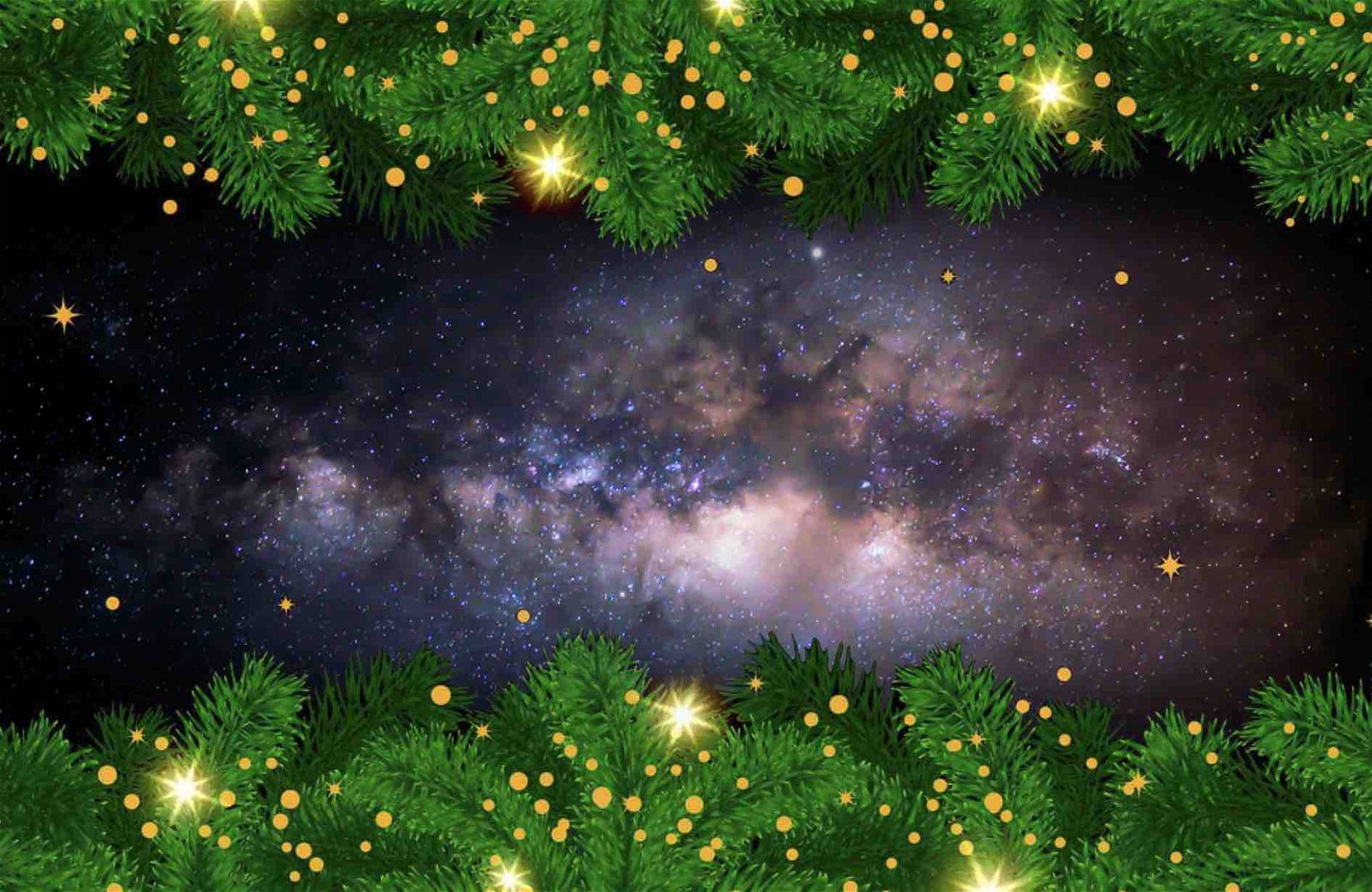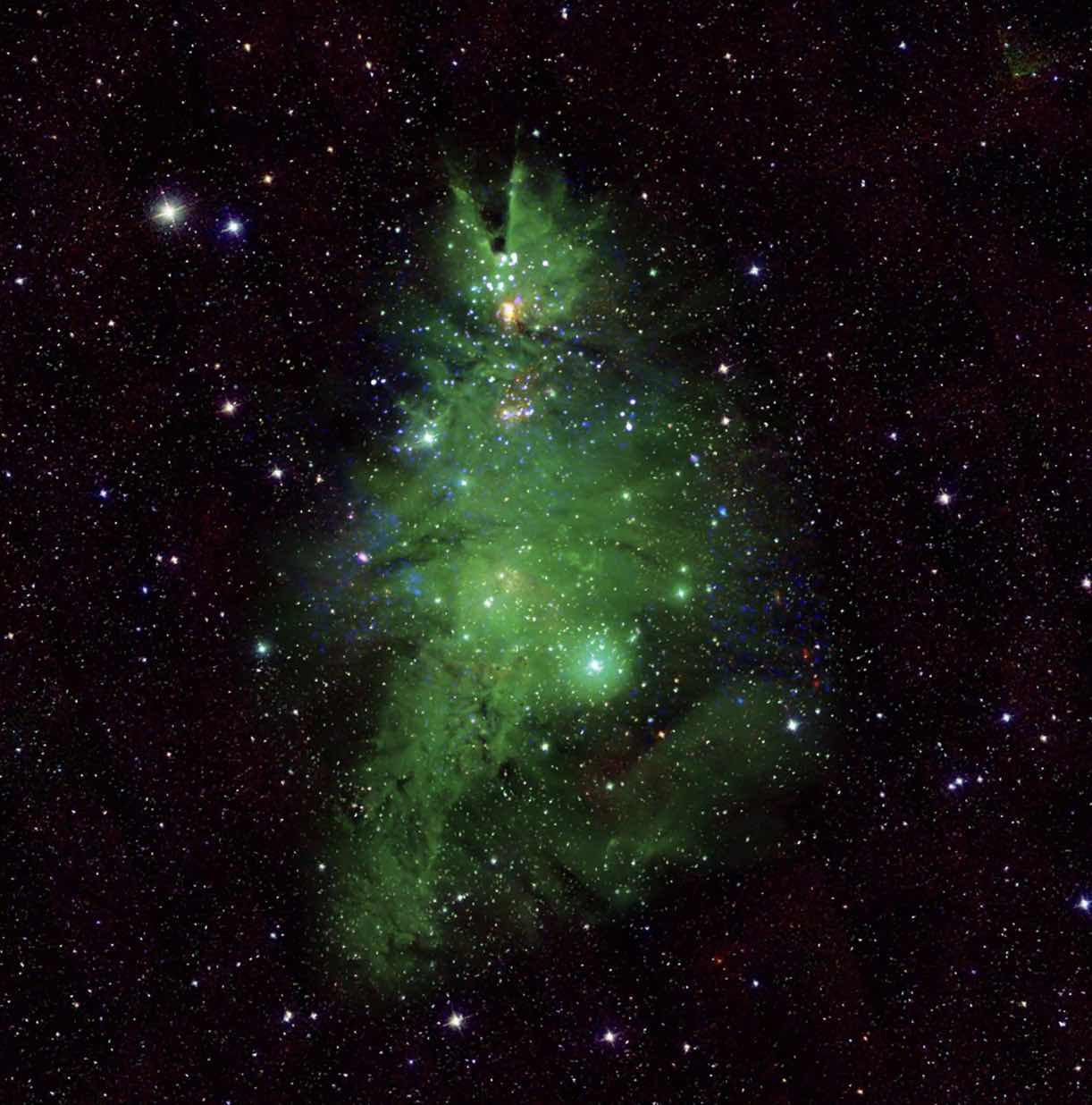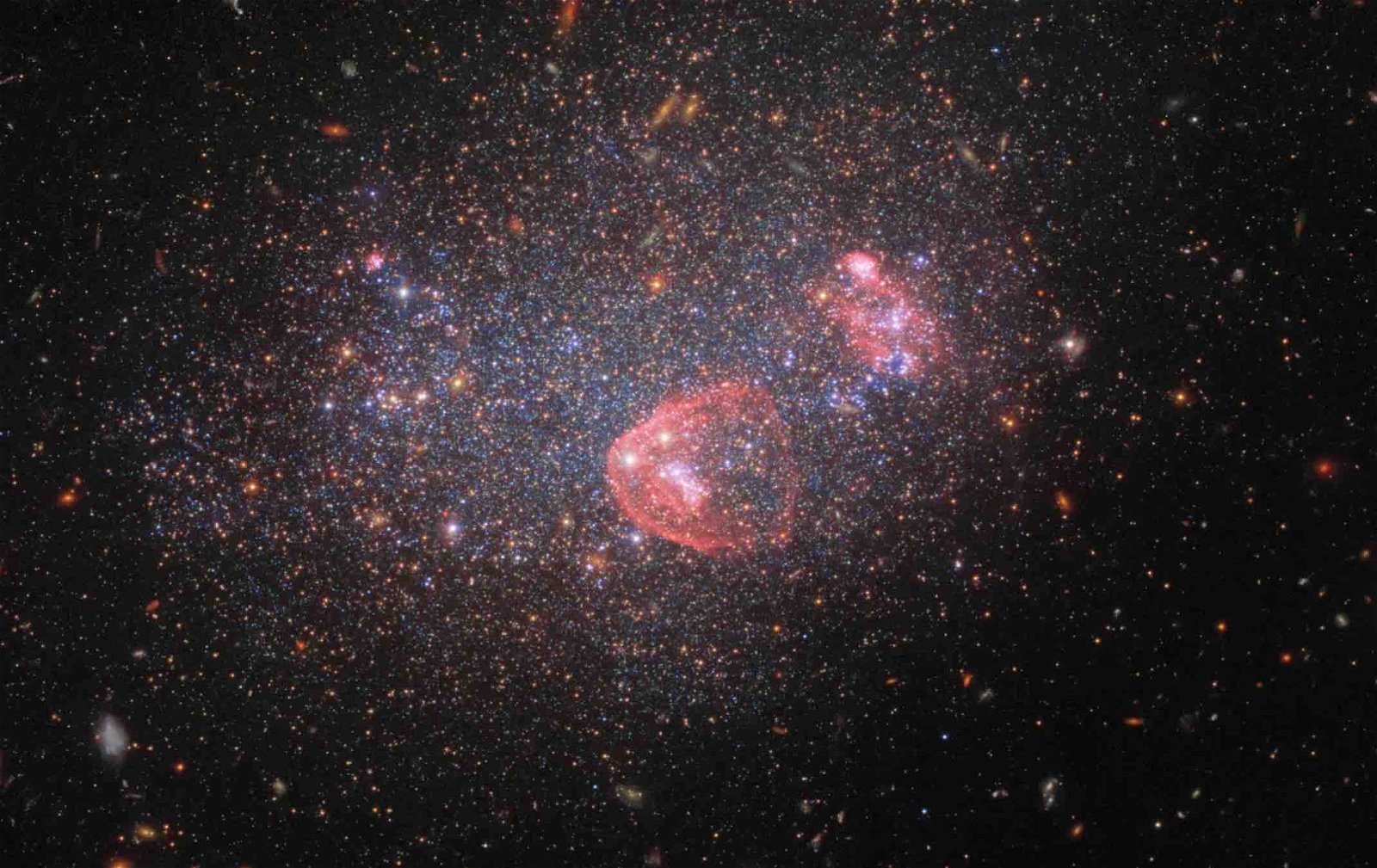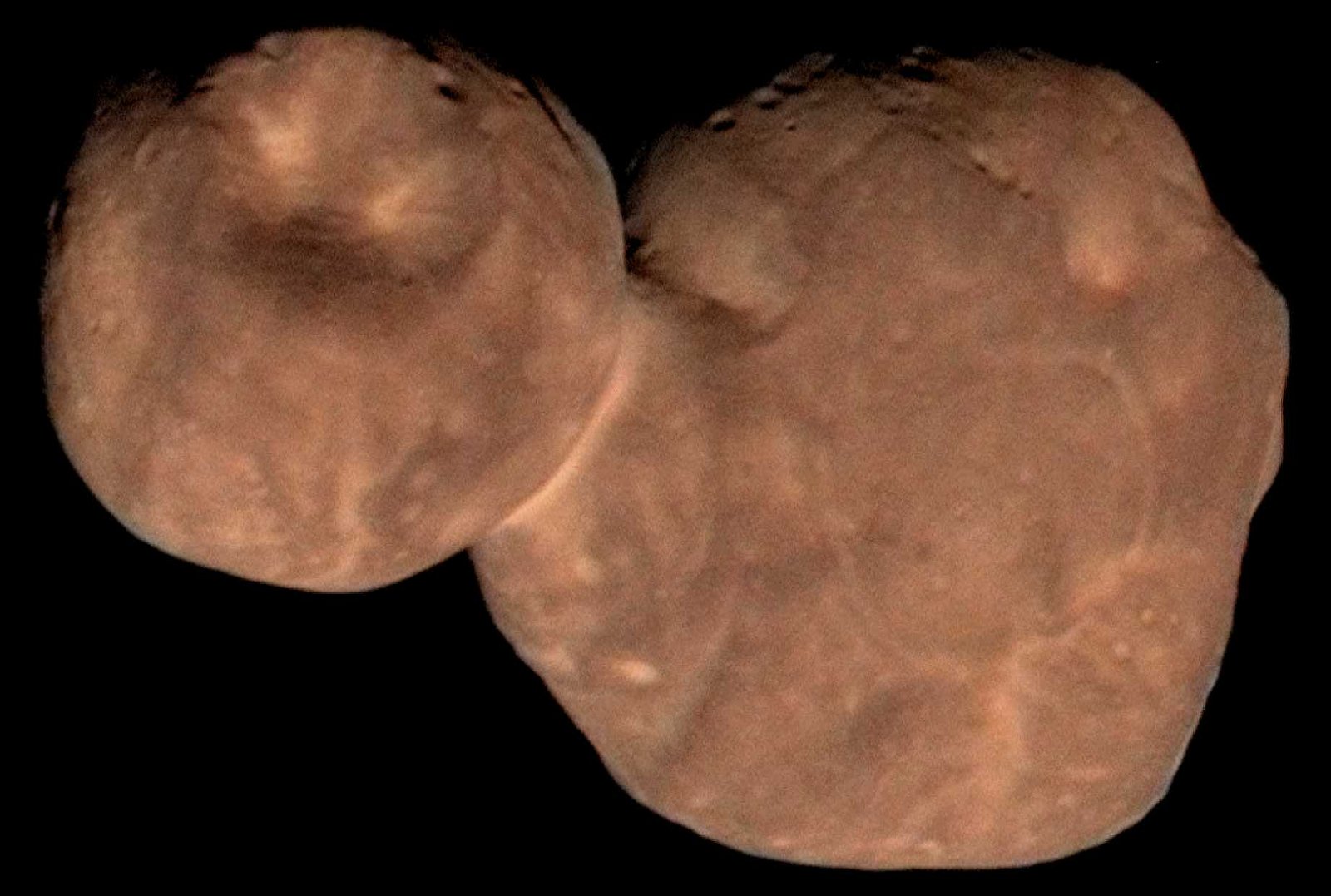

Welcome to this week’s installment of The Intelligence Brief… in this special Holiday Seasonal edition of the newsletter, we’ll be looking out into the cosmos in search of a few of the most festive celestial phenomena in space. Stuffers in this year’s stocking will include 1) a Christmas tree 2,500 light-years away from Earth, 2) a holiday globe of stars in the constellation Virgo, and 3) a snowman in the Kuiper Belt.
Quote of the Week
“Christmas is a season for kindling the fire for hospitality in the hall, the genial flame of charity in the heart.”
– Washington Irving
Latest News: In recent coverage from The Debrief, NASA has released stunning new imagery of the ice giant Uranus captured by the James Webb Space Telescope. Also, a team of researchers has reported the successful demonstration of Star Trek-style ‘teleportation’ without sending any actual information between the two parties. You’ll find links to all our recent stories and other items at the end of this newsletter.
Podcasts: In podcasts from The Debrief, this week on The Debrief Weekly Report, MJ and Steph discuss a curious new discovery in a 500-year-old Rembrandt painting, details about NASA’s latest space plane, The Dream Chaser, and more. Elsewhere, on The Micah Hanks Program, I explore the concept of “catastrophic disclosure,” and whether mitigation strategies could help reduce the chances of harm resulting from uncontrolled or unplanned disclosure of the existence of non-human intelligence. You can get all of The Debrief’s podcasts by heading over to our Podcasts Page.
Video News: Premiering this week on Rebelliously Curious, Chrissy Newton is joined by Paul Root Wolpe, Ph.D., as they delve into the world of genetic engineering, and the fascinating intersection of science, ethics, and the future of life. Also check out the latest episode of Ask Dr. Chance, and all the other great content from The Debrief on our official YouTube Channel.
And now, in our special holiday-themed installment of The Intelligence Brief, we head into space in search of cosmic phenomena that are very fitting for the season.
A Christmas Tree in the Cosmos


Just in time for the holidays, NASA recently unveiled new images of a cluster of young stars known as “The Christmas Tree Cluster,” formally known by the less festive name NGC 2264.
This cluster of stars, believed to be less than five million years old, is located approximately 2,500 light-years from Earth, comprising stars of varying sizes in relation to our own nearest star, the Sun.
As far as the cluster’s uncanny resemblance to a Christmas tree, the new imagery released by NASA was enhanced for this purpose, with the aid of a few color adjustments and a rotation of the image to match the likeness of a festive yuletide evergreen, with optical data from the National Science Foundation’s WIYN 0.9-meter telescope on Kitt Peak revealing the greenish gases in the surrounding nebula.
As an added touch, a simple animation that enhanced the brightness of the X-ray emissions of several of the young stars in the cluster, based on detections made by NASA’s Chandra X-ray Observatory, gives the cluster the appearance of blinking Christmas lights. You can learn more about the Christmas tree cluster here.
Hubble’s Celestial Snow Globe


An equally festive cosmic display can be located within the constellation Virgo, where seven million light years from Earth, astronomers spotted a celestial snow globe with help from the Hubble Space Telescope.
The colorful cosmic bubble is actually a dwarf galaxy that astronomers categorize as irregular, since it does not possess the typical spiraling or elliptical shape of most galaxies, a formation NASA compares to a “brightly shining tangle of string lights than a galaxy.”
Similar to the “Christmas tree cluster,” image filtration helped to bring out the holiday-themed coloration visible in the image, where the reddest areas are likely to be composed of glowing interstellar hydrogen molecules produced by hot energy from stars. You can read more about Hubble’s Christmas Globe here.
A Space Snowman in the Kuiper Belt


Also in our roundup of festive holiday celestial objects is one of the most peculiarly-shaped objects anywhere in the Kuiper Belt, which resembles a curious space-bound snowman.
On January 1, 2019, NASA’s New Horizons space probe made its flyby of the primitive and strangely-shaped trans-Neptunian object, 486958 Arrokoth. Astronomers call the asteroid a cold classical Kuiper belt object, and among its many mysteries are its distinctive “snowman” shape, as well as the unusual mound structures that cover its surface.
Arrokoth’s odd appearance arises from the pair of conjoined minute planets, or planetesimals, from which it is formed. It was discovered in June 2014 during a search for potential targets for New Horizons and has remained mysterious even since the spacecraft obtained imagery of the object that revealed the unusual 5-kilometer-long mound structures that today are known to cover Wenu, the object’s larger lobe.
However, for this holiday-themed installment of The Intelligence Brief, Arrokoth, like the other festive celestial wonders we have reviewed, makes another fitting addition to this week’s roundup; one aimed at helping to bring a bit of cheer to you all this holiday. With that said, allow me to wish you all a delightful holiday, and season’s greetings from all of us here at The Debrief.
That concludes this week’s installment of The Intelligence Brief. You can read past editions of The Intelligence Brief at our website, or if you found this installment online, don’t forget to subscribe and get future email editions from us here. Also, if you have a tip or other information you’d like to send along directly to me, you can email me at micah [@] thedebrief [dot] org, or Tweet at me @MicahHanks.


Here are the top stories we’re covering right now…
- Scientists Analyzing Ancient Scythian Artifacts Have Made a Gruesome Discovery
Anthropologists studying a collection of ancient Scythian artifacts retrieved during excavations at sites in Ukraine have made a gruesome discovery.
- NASA’s Mars Reconnaissance Orbiter Has Captured Images of Something Odd Carved into the Martian Landscape
NASA’s Mars Reconnaissance Orbiter recently captured images of an odd-looking series of ridged lines carved into the landscape of the Red Planet, the U.S. space agency recently announced.
- Record-Setting NASA Laser Experiment Beams Ultra-High-Definition Video to Earth from 19 Million Miles Away
A NASA laser experiment has successfully beamed ultra-high-definition streaming video to Earth from a distance of 19 million miles away.
- James Webb Space Telescope Spots ‘Unusual’ and ‘Enigmatic’ Features on Ice Giant Uranus
NASA has released stunning new imagery of the ice giant Uranus captured by its premiere space observatory, the James Webb Space Telescope.
- Researchers Successfully Demonstrate Star Trek-Style ‘Teleportation’ Without Physically Sending Any Information
A team of researchers report the successful demonstration of Star Trek-style ‘teleportation’ without sending any actual information between the two parties.
- Volcano Turns the Sky Red Over Southwest Iceland, Prompting Evacuations and Placing Officials on High Alert
The eruption of a volcano on southwest Iceland’s Reykjanes peninsula sent plumes of ash into the sky on Monday, following several weeks of earthquakes that rocked the region.
- More Than 23,000 Years Ago, Earliest Americans May Have Traveled “Ice Highways” Across Oceans to Reach North America
Researchers investigating how and when the first people arrived in North America are proposing that ancient travelers may have followed “ice highways” across the Pacific.
- Dream Chaser Spaceplane is Gearing Up to Help NASA Deliver Cargo to the International Space Station
An innovative new spaceplane cargo system is advancing toward its first delivery to the International Space Station (ISS), as one of NASA’s commercial partners providing resupply services.
- Study: Psychology Professor’s Relationship App Shows 80% Success Rate at Improving Romantic Relationships
A university professor and his former student have developed a smartphone-based relationship app that reportedly helped 80% of participants in a recent study improve their romantic relationships.
- Mysterious Hidden Layer Discovered Beneath Rembrandt’s ‘The Night Watch’
Researchers studying Rembrandt’s “The Night Watch” say they have uncovered a mysterious, previously hidden layer underneath the painting.
- NASA is Investigating a Strange Series of Coded Messages from Space. They’re Coming from a Familiar Source.
NASA engineers were reportedly left baffled recently after receiving a perplexing series of coded messages from a point in space nearly 15 billion miles from Earth, according to a recent update shared by the U.S. space agency.
- UAP Disclosure: The Empire Strikes Back
This week on The Micah Hanks Program, we look at all the latest developments with the UAP Disclosure Act, as well as what one famous UAP whistleblower has had to say on the matter of UAP transparency in Washington.
- World’s First Supercomputer That Will Rival the Human Brain to be Unleashed in 2024
Researchers in Australia are developing the world’s first supercomputer capable of simulating networks at a scale comparable to the human brain, which they say will be complete by next year.
- The Senate Just Passed Its Massive Defense Bill: Here’s What That Means for UAP Disclosure
In this week’s newsletter, we’ll be looking at the Senate’s recent passage of the NDAA, and what that means for the UAP Disclosure Act of 2023.
- Scientists Report First Spectrographic Analysis of “Ghosts” in New Study of Rare Atmospheric Phenomenon
Astronomers have successfully obtained spectroscopic data on a rare atmospheric phenomenon known as “ghosts,” according to new research.
- NASA Identifies 17 Potentially Habitable Earth-Sized Icy Worlds, Including Two Cosmic Nearby Neighbors
A team of NASA researchers says they have identified 17 potentially habitable icy worlds including two that are cosmically nearby, which may have subsurface oceans teeming with extraterrestrial life.
- Mischief Managed: Chinese Invisibility Cloaks, Exomoon Blunders, and Building Organic Solar Cells
SUBSCRIBE TO ‘THE DEBRIEF WEEKLY REPORT’: Apple Podcasts | Spotify On today’s episode, MJ and Steph talk about the recent news that the exomoons we discovered were never moons at all. The duo also explore the art of building solar cells out of wood and that students in China have built a functioning invisibility cloak. Every Tuesday, join hosts MJ Banias and Stephanie Gerk as they roundup the latest science and tech stories from the pages of The Debrief. From far-future technology to […]
- 31,000-Year-Old Artifacts Reveal Use of Advanced Projectile Weapon Millennia Earlier Than Previously Thought
31,000-year-old artifacts reveal that stone age Europeans were using advanced weapons thousands of years before previously believed.
- New Plasma Instability Discovery Could Revolutionize Our Understanding of Cosmic Rays
Scientists in Germany report the discovery of a new plasma instability could potentially upend our current understanding of cosmic rays and their origins.